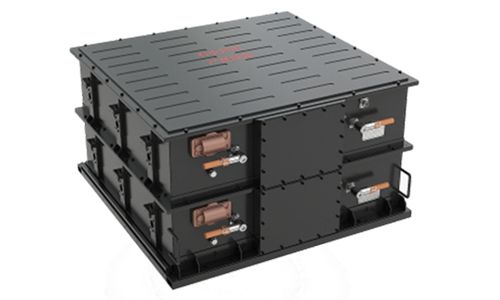Understanding LiPo Battery Ratings
Sep 16, 2019 Pageview:2097
The world of renewable energy has been taken over by a huge number of battery manufacturers. Well, actually it’s more of portable energy for powering electronic devices. And that is we have witnessed a wave of new, more advanced and powerful batteries.
Lithium Polymer (LiPo) batteries are the latest chemistry in the industry. They are now used to power many consumer electronic devices. They are mostly used in the radio control industry, having gained a lot of popularity over the past few years.
There are several benefits offered by LiPo batteries. But that does not mean they don’t have drawbacks. Every user experiences them differently, giving a personal opinion on their experience.
All in all, there is one important factor that battery experts look for; the ratings. In this guide, we are going to discuss what all these numbers mean. Before that, let look at why you should or shouldn’t consider the batteries.
Pros
· LiPos are much lighter. They can be made into any size or shape.
· They carry more energy. Their large capacity means they can hold more power than other batteries.
· Their discharge rates are much higher.
Cons
· The biggest downside is their short lifespan. Most give only 150-250 cycles.
· Risks or explosions and fires are much higher.
· They need serious maintenance
What are LiPo battery ratings?
Sometimes people assume all those numbers on LiPos have no meaning. But wait until you discover how many people ask questions about them.
What do ratings mean for a LiPo battery? In summary, batteries are defined by the rating systems. It allows a user o compare battery properties when searching for the best battery to meet their needs.
There are three most important battery rating you need to be aware of. For LiPo batteries, there is:
· Discharge (C) rating
· Capacity and
· Cell count/voltage
Let us break them down and look at each rating separately.
Voltage
Also known as cell count, a LiPo cell is defined by its voltage. First, there is the nominal voltage which is 3.7V per cell. This means, if you get a battery reading 7.4V or above, they have two cells in series. You may have heard someone mention something like “2S” battery packs. In such, there are two cells arranged in series and contain two cells. A 3/4/5S battery pack will have 3x the number of cells, respectively V.
But wait, what is nominal voltage exactly? Some assume this is common knowledge, but it may not be for many.
Nominal voltage is defined as the default or resting voltage of a battery pack. It is the number that the battery industry uses to compare batteries. Do not confuse it with full charge voltage. Whereas the nominal voltage for LiPo batteries is 3.7, a full charge takes it to 4.2.
Modern technology has enabled us to have more energy in individual cells. This is why some terms, like “2S2P”, no longer exist.
If you are using an electric vehicle, for instance, the voltage will determine how fast it will go. Voltage has a direct impact on EVs and is rated as kV for the brushless motor. A brushless motor spins at about 3,500 RPM per volt. More voltage means a faster car.
Capacity
Many times people confuse capacity with voltage. Capacity is simply what measure how much power a battery holds. It is like thinking of how big a fuel tank is. And capacity is measured in milliamp-hours (mAh). In other words, how much drain can a battery take to discharge hourly?
For the case of an electric car, capacity means how far you will go before recharging. A battery with higher capacity takes longer to recharge.
For R/C cars and trucks, you can get on average, a capacity of 5000mAh. Airplanes and helicopters have varying battery capacities; it is not therefore, easy to determine the average.
Some companies make batteries with bigger capacities. This is determined by the size and weight of the battery. But you need to be careful when picking a car battery with a large capacity. Consider heat build-up in the motor.
Discharge Rating (C rating)
V and C affect the specific aspect of the car. We have mention speed and run-time above. But the discharge rating makes both factors easy to grasp because it is a bit complicated. This is why a misunderstood aspect of LiPos is.
One of them is the biggest issue for batteries. They get spoilt during discharge, and that is where C rating comes in. It is a measure of how fast a battery can be discharged without damaging the cell. It is complicated because it cannot stand on its own. In a nutshell, the C is capacity. So a battery with bigger capacity discharges faster.
Here is some math:
50C= 50 x capacity
If the capacity is five mAh, the result will be,
50x5 = 250A.
250A is the maximum number of the load this battery can sustain safely. Anything higher than this will lead to degradation. It could even burst into a fire.
Many battery chemistries today have 2 C ratings, the Continuous rating discussed above and Burst rating. The Burst Rating can help when accelerating a vehicle.
What do you need to do for LiPo battery ratings?
It is very important to understand LiPo batteries because:
· It will help you choose the right battery for your needs. How much capacity and voltage will power your device?
· For safety reasons. The C rating will help you avoid batteries bursting into flames. The Burst Rating can help you protect your car.
· For general knowledge. Sometimes knowing something puts you ahead on the market. You will buy your batteries knowingly; avoid fakes and getting the value of your money.
Advantages of LiPo battery ratings
Battery manufacturers use battery ratings to compare with other batteries. When on the market, the nominal voltage gives the company something to be considered for.
Since LiPo batteries are becoming more and more love for many users, it is only through the ratings that you get what you need. Let’s say for instance you want to buy a Slash VXLR/C truck. Research by Traxxas states such a track comes with 65A continuous current draw and burst of 100A. Therefore, buying a 2S 5000mAh 20C LiPo battery is your best option.
Conclusion
Buying LiPo batteries is not just as simple as going to the store and getting one. It is about getting the best deal there is. And that is why battery ratings matter.
- Prev Article: Lipo Battery Voltage Monitor – Tool Introduction
- Next Article: Lithium-ion Battery Protection Circuit Reset
Leave Message
Hottest Categories
-
Hottest Industry News
-
Latest Industry News











